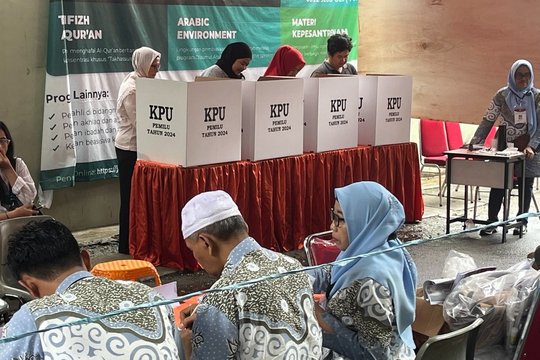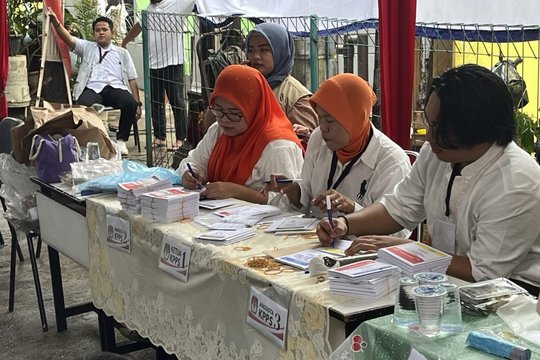The negotiations at the UN Climate Change Conference (COP 27), in Sharm el-Sheikh in November 2022 were both a success and a tragedy for civil society climate movements. On the one hand, they celebrated the historic pledge to establish a Loss & Damage financing mechanism, which they had fought for at the side of climate-vulnerable countries for 30 years. On the other hand, their participation as observers of the negotiations was severely restricted by the host country Egypt and activists were persecuted outside the conference grounds. The horrendous room rates of hotels in the tourist destination of Sharm el-Sheikh also made participation difficult for those without institutional funding.
The countries of Southeast Asia are particularly exposed to the effects of climate change. Along long coastlines, severe weather events such as floods, storms, and typhoons are becoming more frequent. In addition, there are slow onset events of climate change, posing new risks to humans and the environment emerging from of sea level rise, ocean acidification, rising temperatures, dwindling biodiversity and salinization. Islands are sinking into the sea and megacities, such as Jakarta or Ho Chi Minh City, some of which are below sea level, are particularly threatened by its rise and by severe weather events, such as floods and rain. At the same time, financial and technical capacities to mitigate and/or respond to severe weather disasters are limited at the individual, community, and state levels.
The industrialized nations of the global North are historically responsible for the emergence of climate change. In relation to their comparatively small population, they still make an above-average contribution to global greenhouse gas emissions and fall far short of their climate targets. But emissions are also growing in the countries of Southeast Asia in the wake of industrialization and rising material prosperity. Studies show that the governments of Southeast Asian countries are also doing too little to combat climate change. According to calculations by the Climate Action Tracker, the climate targets of Indonesia, Vietnam, Thailand and Singapore are not sufficient to meet the 1.5-degree target, but are rather heading towards 4-degree global warming. Against this backdrop, we would like to focus on civil society climate movements in the upcoming 2/2023 issue of the südostasien magazine.
Civil society climate movements are bearers of hope. They are a form of participation for individuals and groups (local citizens' initiatives and environmental associations, NGOs, collectives, agricultural cooperatives, trade unions, student groups) for whom the climate policy of their government does not go far enough. Southeast Asia's civil society climate movements have resulted in multifaceted initiatives that address a wide range of issues. In addition to their diverse organizational forms, they are also platforms for exchange, collective action, and solidarity. For example, in the Philippines, civil society climate movements regularly call for demonstrations on the streets, while in Vietnam, against a political authoritarian backdrop, they found other ways to 'loudly' articulate demands. This is often done through institutionalized channels, as can be seen with reference to the realization of the promised energy transition. Different groups - from indigenous peoples to young climate activists and institutionalized organizations - are coming together throughout Southeast Asia, using equally diverse forms of protest (online, on the streets, or with artistic forms of expression) to fight for sufficient climate policies.
Protesting climate change and advocating for environmental protection often meets with rejection from political and economic actors. In an increasingly authoritarian political environment, activists in Southeast Asia's climate and environmental movements face various risks. Many of them have been threatened, denounced, slandered, criminalized and even murdered in recent years.
For the upcoming 2/2023 issue of südostasien, we are looking for contributions that address the following questions, among others:
- Who is engaging in climate activism? Which individuals, milieus, civil society groups are represented in or support climate movements?
- How widespread is support for progressive climate policies among the population? What priority does this have, for instance, in electoral decisions?
- What organizational forms does the climate movement have in the countries of Southeast Asia, and what strategies and modes of action does it pursue?
- Which aspects of the consequences of climate change and climate policy (energy, food, mobility, ...) are addressed, which are not?
- What role do the narrative and practice of climate justice and sustainable development play in the formation and practice of climate movements in Southeast Asia?
- How do civil society climate movements in Southeast Asia relate to nuclear power and other energy resources?
- How have climate movements in Southeast Asia changed over the years? What are the generational differences?
- What forces oppose progressive climate policies in Southeast Asia? How are these being addressed by the climate movement?
- How have policymakers responded to the climate crisis so far? What approaches to climate policy exist and what measures are being implemented?
- Has the climate movement so far succeeded in influencing policy?
- What are the connections and linkages between climate movements in Southeast Asia and in other parts of the world? What role do the global networks of the Southeast Asian diaspora play?
- In what ways does the Fridays for Future movement operate in Southeast Asia?
- What is the role of Southeast Asian countries in global climate negotiations?
- Which activists or groups from Southeast Asia are represented in protests in the context of international negotiations? What is your role there?
We would like to address these and other questions in the 2/2023 issue of the südostasien magazine in various forms, in portraits of actors, commentaries, reports, background reports, analyses, interviews, photo essays, and reviews of films or books. We are looking forward to your contributions - both texts that exemplarily deal with individual movements as well as articles on structural questions of climate movements in Southeast Asia.
Deadline
Deadline for articles (max. 10,000 characters = 1,500 words) is March 15, 2023 (in individual cases and after consultation with the editors, a later deadline may be possible). Please submit a short abstract (max. 1,000 characters = 150 words) to the editorial office in advance.
Contact the editorial team:
Janis Wicke: janis.wicke(at)posteo.de
Julia Behrens: julia.behrens(at)vlabberlin.de
Kathrin Eite: kathrin.eitel(at)uzh.ch
Mirjam Overhoff: mirjam.overhoff(at)philippinenbuero.de
Nora Drohne: nora.drohne(at)web.de
Raphael Göpel: raphael.goepel(at)asienhaus.de
Katja Hanke (Reviews): soa_rezensionen(at)asienhaus.de









